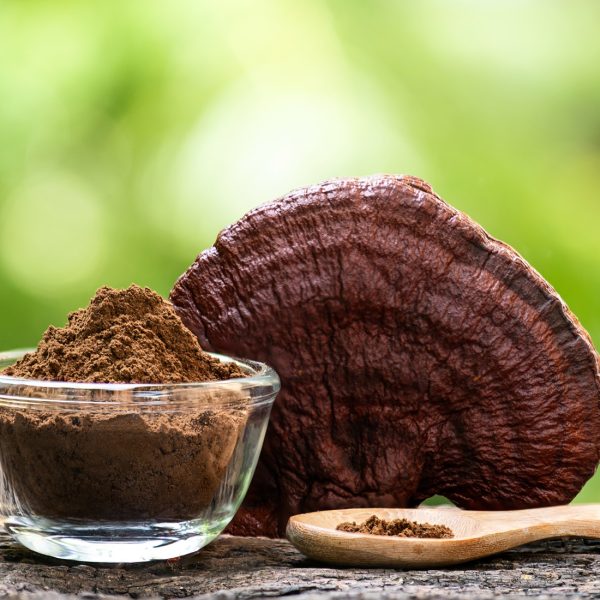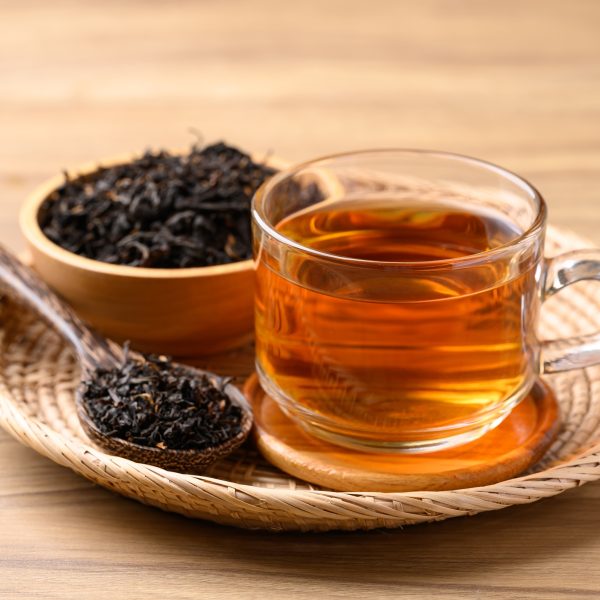A case study by Isabela Mascaró
Introduction
Gender discrimination in the Western Medical Model is a problem too often ignored. As Matt Hancock, Secretary of State for Health and Social Care, rightfully says “For generations, women have lived with a health and care system that is mostly designed by men, for men”
Exploring the condition of Premenstrual Syndrome (PMS) opens the door into the most critical problems women face in the medical model including normalization of symptoms and lack of treatment options.
PMS is described as the onset of psychological and physiological symptoms up to 2 weeks before menses with relief seen after the onset of menstruation. There is a wide range of symptoms affecting mostly the Gastrointestinal, Nervous and Reproductive Systems. From 30% to 85% of women report at least one premenstrual symptom during each menstrual cycle, and 10% report that symptoms are so debilitating that they have a negative impact in their duties. However, most women do not seek medical treatment or advice because these symptoms have been normalized.
When women do seek treatment, their options are limited and in certain cases unsuitable. Conventional treatment includes OC’s, NSAIDs, SSRIs, antidepressants, and diuretics, most of which only target symptom relief but lack to address root causes, provide a personalized treatment and often come with side effects that might worsen the condition.
Herbal medicine can excel in such area by providing a complete integrative approach. The practitioner can provide a personalized treatment with herbs that suit each woman and their unique manifestation of symptoms. Furthermore, the practitioner plays a vital role in the process of educating women about the importance of their hormonal health, and exploring their own beliefs about menstruation and relationship to their feminine energy.
The following case is important as it highlights the need for herbal medicine with women that conventional treatment has caused side effects and seek an alternative option.
Presentation & Case History
Jane (false name) is a 20-year-old female. Currently experiencing PMS symptoms 7 days before her period including mastalgia, lower back pain, migraines 2-3 days before period, food cravings (high carb and fat foods) and acne. PMS symptoms ceased at the onset of menstruation, yet new symptoms would emerge such as diarrhoea, metrorrhagia (super tampons every 3 hours), dysmenorrhea, nausea and low appetite for which she would manage with paracetamol 600 mg 3x a day with no success.
Her first menstrual period was at age 11. From the beginning her cycles were irregular (+45) days, and she suffered from metrorrhagia, dysmenorrhea and menstrual migraines (MM). In 2018 she was given the OCP as treatment for irregular periods, with no further diagnosis. She took the OCP until January 2020 and suspended because she had side effects from the pill including breast augmentation, increase abdominal fat and increased severity of acne.
The patient had a history of gastrointestinal conditions. At age 14 she had a severe episode of vomiting, where she would throw up every day and be constantly nauseous. At 16 she was hospitalized for chronic gastric pain. She was diagnosed through endoscopy with gastritis. Two years later she was diagnosed as lactose intolerant. Current symptoms included gases, constant hunger, diarrhoea during menses, constipation. Digestive symptoms would worsen when stress levels would rise.
Her lifestyle and eating habits were irregular. She would wake up tired and fatigued at 10-11 am. Her first meal was around 10 am-12 pm including avocado on toast and black coffee, second meal would be around 6-8 pm including chicken and salad. At night she would stay till late on the computer, before to lockdown she would spend time with friends and party 3 times a week. She did not smoke but her alcohol consumption was constant (refrained from giving an actual amount) on the weekends. A year and a half ago she started having insomnia and found it hard to fall asleep.
She had recurrent UTI since her period started.
At the end of the consultation her mother joined the zoom meeting and started sharing her point of view of her daughter’s condition. There was a clear tension between the two. The body language of Jane shifted, she closed her arms, dropped her gaze and became detached. It was clear then that she was seeking an alternative treatment because the pill had had side effects on her physiology, but she was also being pushed by her mother to try a “natural” option.
Investigations
Physical examinations were not performed since we had an online consultation.
Jane looked, pale, fragile and exhausted. Her lower abdomen had a round appearance that contrasted with the slender upper abdomen. Tongue pictured showed yellow coating in the back of her tongue.
We discussed about taking an oestrogen and progesterone test during her luteal phase. She decided not to take the exams because we were in the peak of lock down and she didn’t want to get exposed.
Diagnosis
Previous allopathic doctors reported that blood work was normal and there was no conclusive diagnostic.
Her clinical picture is representative of PMS, mostly lead by oestrogen excess unopposed by progesterone or an underlying progesterone deficiency.
Arvigo diagnosis: retroverted uterus.
Approach to Treatment
The diagnosis of PMS was straight forward as her symptoms were classical of the condition. However, there are different patterns within PMS and understanding the underlying mechanism in her specific pattern was an important part for developing the protocol.
The underlying mechanism in this case stems from several factors including anatomical, hormonal, and lifestyle.
Under the Mayan Abdominal point of view, the patient most likely has a retroverted uterus. The uterus being backwards exerts pression over the bladder causing recurrent UTI and lower back pain. The back pain gets further aggravated as the menses approaches because the uterus starts swelling and occupies more space. This position further hinders the elimination of endometrial tissue causing cramping and painful periods, all symptoms the patient presented. It is also suggested that a misplaced uterus can cause a delay in hormonal feedback loop between the hypothalamus and the reproductive organs causing erratic hormonal production.
The exact pathology for PMS remains unknown, however in Jane’s case there might have been an excess oestrogen vs low progesterone undertaking. It has been well documented that oestrogen withdrawal in the luteal phase, particularly in women with high oestrogen levels may be the causative factor for menstrual migraines. Excess oestrogen also causes metrorrhagia and mastalgia in cases of unopposed oestrogen. One of the biggest indicatives of oestrogen excess was her body reacting to the OCP by having SE, thus her body was not properly eliminating oestrogen or endogenous hormones.
Inflammation may be a central component to the clinical picture of Jane. High levels of prostaglandins have further aggravated MM and cause nausea and diarrhoea, dysmenorrhea and bloating.
Her lifestyle and dietary choices kept perpetuating a state of “heat”, inflammation playing an important role in her condition. The lack of structure in her overall schedule was further aggravating the erratic pattern of hormone production in her cycle. The long period in between meals could be contributing to the food cravings during the luteal phase. Naturally, women are prone to have insulin resistance during this stage therefore a higher caloric intake is needed. However, when blood sugar levels are not stable, due to lack of food intake or lack of caloric intake insulin resistance is further aggravated causing food cravings for high caloric food.
Jane needed to be supported in hormone elimination and regulation, reduction of inflammation and strengthening the Hypothalamic-Pituitary Ovarian axis.
Treatment:
- Bitters were greatly needed for aiding elimination and processing of hormones through the liver.
- Hormone modulators of two kinds. Promote progesterone effects in the body to dampen oestrogen effects and oestrogen receptor modulators.
- Uterine tonics for strengthening the uterus
- Adaptogens to aid her body recover her natural circadian rhythm
- Anti-inflammatories and anti-spasmodics to reduce GIT related symptoms and heal the gut lining.
First Prescription
Main Prescription
| Herb | Type | Quality | Quantity | Rationale |
|---|---|---|---|---|
| Cimicifuga racemosus | Tincture 1:3 | Organic, imported | 40 ml | Classically used for menstrual migraines, oestrogen receptor modulator, uterine tonic and anti-spasmodic. |
| Matricaria recutita | Glycerite 1:3 | Organically, personally grown, made from fresh flowers only | 40 ml | Anti-inflammatory, gut trophorestorative long term, used for balancing pitta. |
| Schizandra chinensis | Tincture 1:3 | Organic, imported | 60 ml | Adaptogen, hepatic, yin-tonic, CNS regulator. |
| Zingiber officinalis | Fresh Juice | Organic, grown in the amazon | 20ml | Anti-inflammatory, increases pelvic circulation stimulation, anti-emetic, carminative |
| Asparagus racemosus | Tincture 1:3 | Organic, imported | 80 ml | Uterine tonic, digestive emollient, adaptogen. |
Total = 240 ml per month. Take7 ml in the morning and 7 ml in the evening .
| Herb | Type | Quality | Quantity | Rationale |
|---|---|---|---|---|
| Vitex agnus castus | Tincture 1:1 | Non-organic, imported | 28 ml | Hormone regulator, regulates luteal symptoms by stimulating progesterone receptors, promotes regular ovulation, used in case of mastalgia. |
Take 30 drops first thing in the morning
Sleep mix
| Herb | Type | Quality | Quantity | Rationale |
|---|---|---|---|---|
| Eschscholzia californica | Tincture 1:3 | Organic, personally grown. | 40 ml | Anyodine, somnifer |
| Withania somnifera | Tincture 1:3 | Organic, personally grown | 40 ml | Adaptogen, anti-inflamatory, aids in sleep |
Take 60 drops 2 hours before bed.
Treatment Plan
The first month the treatment plan was centred around supporting her own circadian rhythm for hormone production to be regular and cyclical again, especially during the luteal phase.
Sleep hygiene was suggested in order to improve her sleep quality and re-stablish a normal sleep pattern.
She was recommended to substitute coffee with guayusa, a natural caffein free plant from the Ecuadorian Jungle that will support her energy levels in the morning without impacting her adrenal glands and hormone production.
It was also suggested that she focuses on improving her diet to balance blood sugar levels through the day. During her menstrual phase she should favour anti-inflammatory fats and high-quality protein to reduce and prevent food cravings. She should introduce more fibre in her diet to aid in clearance of excess hormones and tendency towards constipation.
Other Medication and Treatments
Arvigo massage therapy was suggested for a near future in order to support her womb placement and blood circulation to the pelvic area. It would also be a tool to establish a closer relationship with her feminine energy and her cyclical nature.
Follow-up Appointments
1st Follow up (1 month)
Jane reported significant improvements during this month. Symptoms including mastalgia, menstrual migraines, bloating and diarrhoea were gone. Her abdomen had a more uniform shape as the lower abdomen was less swollen. She had lost weight around the abdominal area. Her cycle lasted 28 days and her menses lasted 4 days.
She also reported an improvement in her sleeping cycle. She was able to sleep earlier before 1:30 am and woke up with more energy.
She still experienced food cravings during her menstrual phase and dysmenorrhea, but intensity of both was reduced. Sense of nausea reduced but was still present.
She did not follow the dietary recommendations.
This month she wanted to improve her acne. We discussed about following the dietary recommendations and the importance of such for her hormonal health on the long term.
Her mother expressed that she had to constantly remind Jane to take the medicines since otherwise Jane was not responsible for herself. This brought a discussion between both, Jane and the Mother, around Jane taking responsibility for Jane’s health. We discussed this topic in private with Jane after her mother left the meeting, she felt frustrated and infuriated that her mum was constantly pressuring her to do things and didn’t respect her personal decisions or space.
2nd Follow up (2 months)
Jane had finished university and started summer holidays. She reported further improvements. Migraines, mastalgia and nausea were under control. She no longer had food cravings for high fat high carb foods during her luteal phase and her dysmenorrhea had reduced to only 1 day and was manageable without paracetamol. Her period was again 28 days.
She was extremely happy on her physical body as she looked slender and more toned, her abdominal fat had further reduced, and the clothes felt loose on her.
Her sleeping patterns were back to her usual schedule because she was on holidays so she would stay until 2 am with friends. However, she still woke up with energy and stopped feeling exhausted all the time.
She was asked about the nutritional recommendations and she reported that she did not changed anything this month despite our previous conversation. I explained to her that if she wasn’t willing to change her lifestyle, I could keep prescribing the herbs but she was losing an opportunity to take responsibility over her health. She said she was happy with the results we had achieved and that was good enough for her. We closed the consultation under the mutual understanding that she got what she was looking for and she was happy with that.
3rd Follow up (4 months, texts with mother)
I texted Jane’s mother for a final follow up. She had gone back to University and she was happy with the herbs and treatment. She had stopped taking the herbs during the summer and symptoms hadn’t returned.
Follow-up Prescriptions – with rationale for changes
Prescription for 1st and 2nd follow up remained the same as patient continuous improvement from using the herbs.
1st and 2nd follow up we discussed the original recommendations around sleep hygiene and dietary changes. However, after the 1st follow up it was clear that the patient wasn’t ready to adopt the suggestions and she was satisfied with the herbs managing the symptoms.
Final outcome
The patient took the herbs for 5 months in total before leaving to university abroad. She is now living in the United States undergoing her 2nd year of university. Most of her symptoms were under control during the first months of university. The migraines started to reappear after the 4th month. Her mother contacted me asking what where her options and we had the same conversation I had with Jane on our last consultation. Jane was in a stage of her life where she was looking for symptom management and little lifestyle change. The herbs were going to help her to an extent, but she also had to take responsibility for her health. The mother agreed and she was clear that her daughter wasn’t ready to create those changes in her life. Both Jane and her mother decided she would go back on the pill to manage the MM until she was ready to create a real change in life.
Despite her going back on the pill Jane’s quality of life was greatly improved. The only symptom to resurface was the MM, so she no longer had a wide range of symptoms to deal with the week before her period. Her self-confidence and relationship with her body transformed. She often described her lower abdomen like “looking and feeling pregnant” from the constant bloating and inflammation she was experiencing. Once her belly started to flatten out, she realized this was merely a symptom of a deeper imbalance and that her body had been speaking to her all this time through subtle messages.
Jane understood that her “condition” could be completely managed with a holistic approach, she didn’t have to live every month with menstrual symptoms and that her body was communicating to her all this time, all she had to do was listen. Her biggest lesson was that there are external factors such as herbs that can help her in the journey, yet she was the one to take full responsibility for her health if she wanted to have long lasting results.
Being one of my first cases after graduating, this case taught me a very important lesson. The first one was the power and efficacy of herbs. I wasn’t expecting to see results in such a short amount of time and without any lifestyle or nutritional changes. It was merely the effect of the herbs as most things in her life remained the same. The second lesson was the importance to identify the extent to which the patient is ready to take responsibility. As mentioned previously, Jane wasn’t looking for a change in lifestyle, she was looking for a way to manage her symptoms without side effects. Whether is symptom management or actual treatment, herbs can accompany woman in deep and profound ways.


























